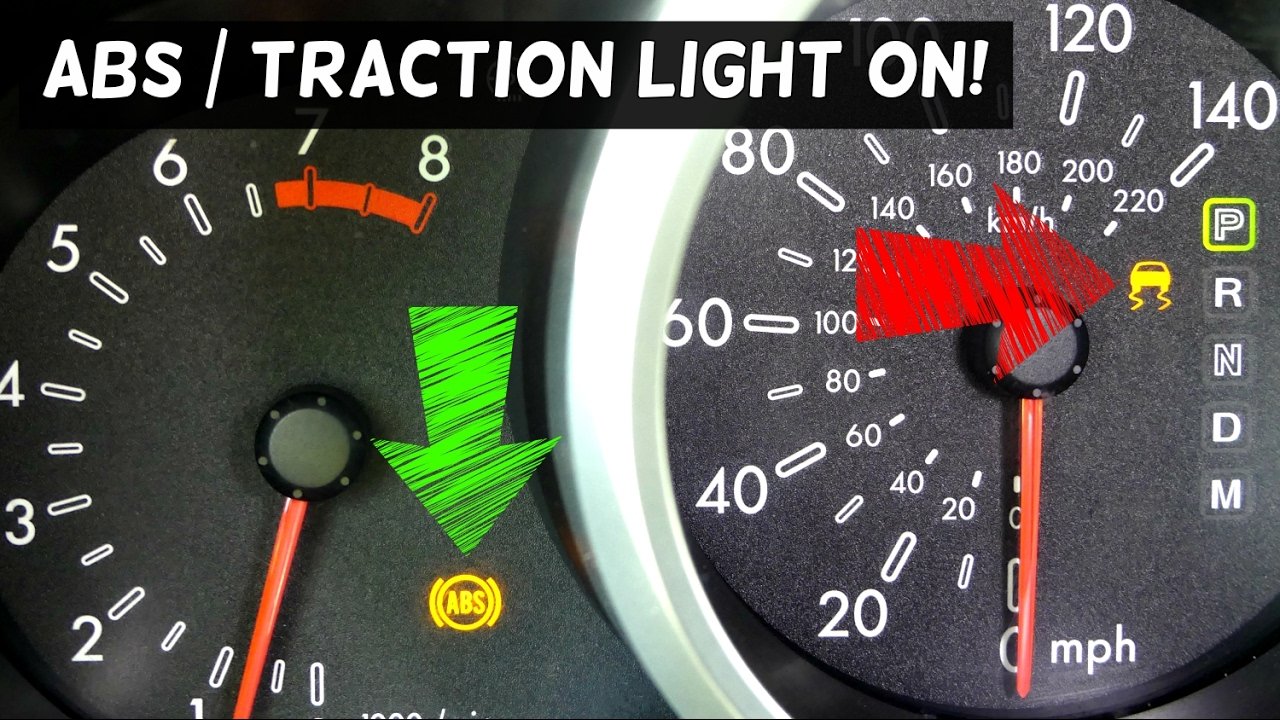- Hours Of Operation:Mon-Friday 8am - 6pm
- Towing Service: Open 24/7

Safety features in modern cars are more advanced than ever before. One of the important features designed to make driving easier and safer is the Traction Control System (TCS). It helps you maintain control of your car when there is a loss of traction on the road because of rain, snow, ice, or loose gravel. The system uses various sensors along with adjustments to the engine. If, for any reason, this system fails or malfunctions, a symbol will appear on your dashboard, which is called the Traction Control Light (TCL).
This guide aims to put you through the steps of what the TCL means, why it turns on, what you have to do to fix it, and everything in between without having to be a mechanic.
Most car manufacturers have different symbols for pressing traction control warning issues and, therefore, do not widely vary. The most common look is:
Your car’s TCS uses data from wheel speed sensors, throttle position sensors, and steering angle sensors to detect if one or more wheels are slipping. If it detects a problem, the system adjusts:
By correcting these in real-time, the TCS helps keep your vehicle stable.
There are three main scenarios where the t/c light will light up:
Here are the most common causes behind the warning lights:
When your tires momentarily lose grip on a slick road surface, the light may flash briefly. This is normal behavior and means the system is doing its job.
These sensors are vital for detecting slippage. If one of them fails or gets covered in dirt or debris, the system can’t work properly and the light will stay on.
Corrosion, broken connectors, or water intrusion can cause wiring faults, preventing accurate data from reaching the control module.
Because ABS and TCS share parts and sensors, a problem in the ABS (like a failed control module) can also trigger the TCL.
The module that processes all the data may stop working correctly due to electronic failure or internal faults.
If your tires are not evenly worn or you mix different tire sizes or brands, the system might misread traction and trigger the warning light.
Many people ignore warning lights, especially if the car “feels fine.” However, here’s what can happen:
Technically, yes, but it depends on the road conditions.
For city driving in ideal conditions, you can drive to a repair shop. But if the roads are slippery or if the light is blinking frequently, reduce speed and drive with extreme caution.
If you’re confident doing some basic car maintenance, you can try these methods before heading to a mechanic:
Uneven tires confuse the sensors, so rotate or replace them as needed.
An Onboard Diagnostics scanner can read error codes and tell you exactly which sensor or system is malfunctioning. You can buy one online or visit an auto parts store for a free scan.
You can try resetting the system by:
This might clear false warnings, especially after minor fixes.
If you’ve tried all the basic troubleshooting steps and the light is still on, here’s what a trusted car maintenance service might do:
Believe it or not, there are certain situations when turning off the traction control helps:
Sometimes, TCS reduces engine power so much that you can’t lock the car-free. Turning it off allows the wheels to spin more freely.
On racetracks, skilled drivers often turn off TCS to allow for drifting or sharp cornering, giving them more control.
Mechanics may turn off TCS during sensor checks or part replacements.
Proactive maintenance can help you avoid issues before they start:
Assuring tires have a standard pressure helps avoid the traction control system having issues. Should the tyres be slightly deflated or have their pressures lowered, the sensors may interpret this as a loss in grip which could trigger warnings misleadingly or temporarily disable the system.
If done poorly, wheel alignment can contribute to excessive tread on the wheel’s surface and erroneous steering; TCS would change its traction mapping, which may lead to incorrect functioning, alerts, and reduced efficiency. Alignment check regularly is recommended for safe operations and to save the components of the vehicle like the tires, suspension, and chassis.
The sensors associated with each wheel are crucial for the proper functioning of traction control. If something is wrong with a sensor, such as it being broken or filthy, the warning light may come on, or the entire system may become nonfunctional.
Yes, it can. A constantly active TCS can cause unnecessary engine adjustments, affecting fuel efficiency. Also, if it’s malfunctioning, it might keep you in lower gear, consuming more fuel.
Here’s a quick comparison:
| Light Type | Function | Action Needed |
| TCL | Detects loss of traction | Check tires/sensors/modules |
| ABS | Prevents brake lock-up | Inspect brake system |
| Check Engine | General engine warning | Requires full diagnostic scan |
Your car’s traction control system and car swerving light are there to protect you. Don’t ignore the warning light, especially if it stays on for more than a day. No matter, if it’s a dirty sensor or a major system failure, resolving the issue helps you:
With the right knowledge and a few tools, many issues can be fixed at home. But if you’re unsure, never hesitate to seek help from an Expert Car Mechanic.